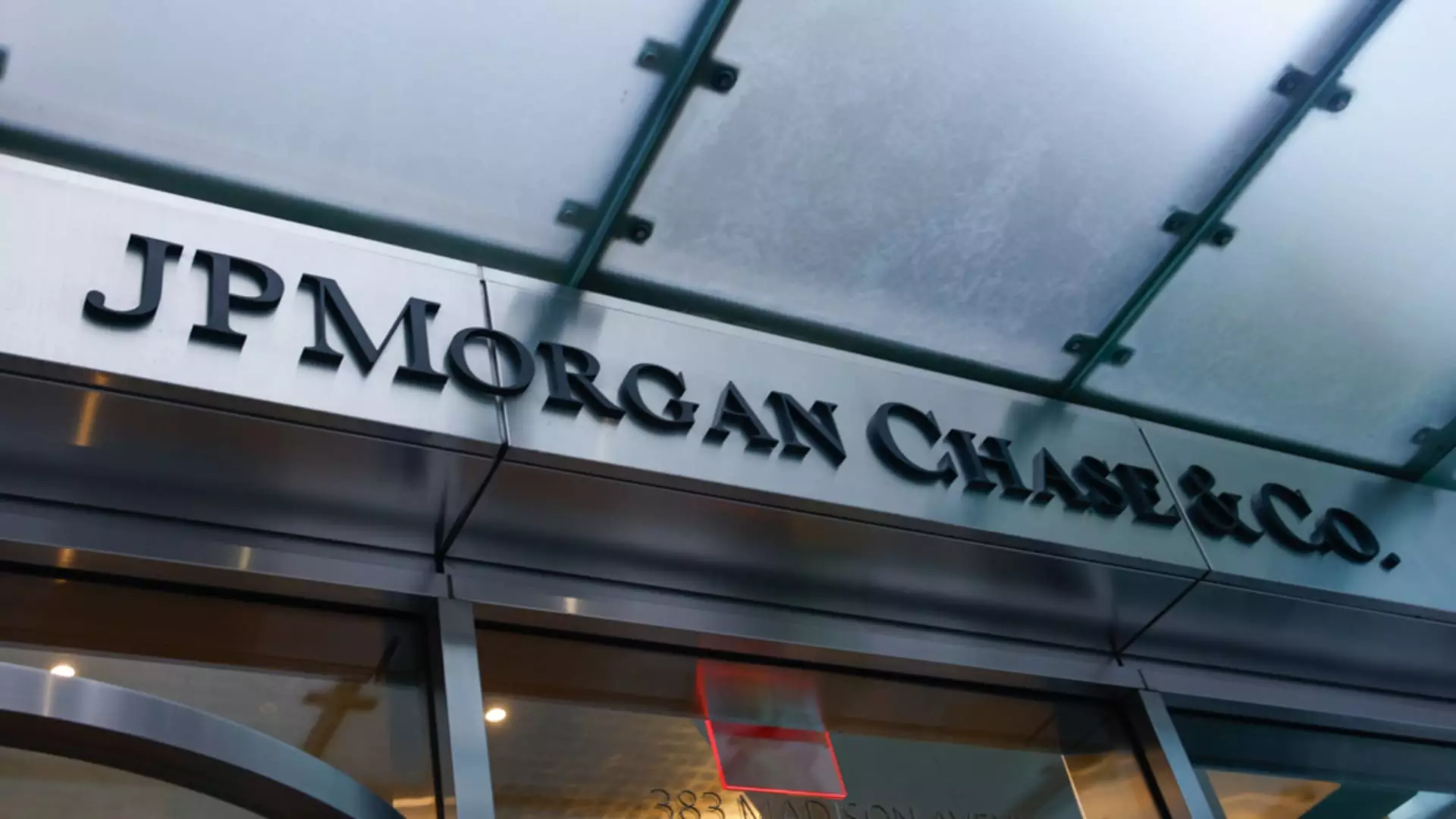In the current climate of frothy stock markets, mega-cap banks like JPMorgan Chase and Bank of America have become poster children for bullish investors. JPMorgan, in particular, has dazzled with a blistering 20% gain this year, far outpacing the broader S&P 500’s 4% advance. However, beneath the surface of this exuberance lies a precarious truth: these stocks may be dangerously overvalued, setting the stage for a painful correction. The often-celebrated rally, fueled by deregulation optimism and strong capital reserves, rests on sky-high valuation multiples that are exceedingly difficult to justify by future earnings growth.
JPMorgan’s forward price-to-earnings ratio has ballooned to an eye-watering 15.5, and it now trades at nearly three times its tangible book value—a historical peak. Such stretched valuations raise serious doubts about the sustainability of future returns. When a company trades at these lofty levels, even minor disappointments in earnings or regulatory setbacks can trigger disproportionately large declines. Despite JPMorgan’s reputation as a “best-in-class” franchise with dominant market share and a fortress-like balance sheet, the current price seems to embody more hope than solid financial reality.
Bank of America: Fair Value But Not a Bargain
Bank of America offers a slightly less extreme risk profile than JPMorgan, but it too sits at a challenging valuation juncture. With a forward P/E ratio of 13.1, BAC’s gains have been more measured—roughly 8% year-to-date, still outperforming the market. Analyst David George’s recent assessment downgraded JPMorgan to underperform and trimmed enthusiasm for Bank of America to neutral, signaling that the latter’s rally has largely run its course.
Previously, Bank of America was undervalued, especially during episodes of market panic where external selling by Berkshire Hathaway irrationally depressed its stock price. That dislocation has since corrected, and now the market seems to have fully factored in BAC’s improving earnings power and the benefits of rising net interest margins. Consequently, the bank is no longer a compelling buy but more a hold-your-position stock. Investors chasing BAC now risk catching the tail end of a run rather than capitalizing on undervaluation.
Wall Street’s Blind Spots and the Reality Check Ahead
Despite these cautionary signals, bullish sentiment remains robust among the majority of Wall Street analysts. Data shows that more than half of JPMorgan’s and most of Bank of America’s analysts maintain “buy” or “strong buy” ratings. This consensus optimism could be overlooking the inherent risk that comes with paying peak valuations during an uncertain economic landscape. The compounding effect of elevated regulatory risk, tightening credit conditions, and potential headwinds in capital markets should not be dismissed lightly.
The dissonance between bullish narrative and fundamental value often results from herd behavior during bullish market phases. Investors tend to prioritize momentum and storyline over disciplined valuation analysis. This herd mentality inflates prices and obscures the warning signs that historically precede drawdowns. For those willing to look critically and act conservatively, now is a time to reconsider allocation to these banking behemoths, or at least temper expectations for their future appreciation.
The Dangers of Chasing Momentum in the Financial Sector
It is entirely rational to admire JPMorgan’s management quality and franchise strength. The bank’s operational excellence and diverse revenue streams are enviable. Yet, the market price increasingly seems to encapsulate perfection. When valuations reach such extremes, investors effectively pay for flawless execution and optimal conditions—an unrealistic expectation in a cyclical and often volatile industry.
Similarly, Bank of America’s modestly lower valuation appears more balanced but lacks the upside potential needed to justify aggressive buying right now. Instead, investors should demand a margin of safety before further subscribing to the narrative of unstoppable growth. Without such caution, the temptation to chase momentum risks eroding capital in the eventual reversion to more reasonable valuation multiples.
In a market festooned with uncertainty, fiscal prudence and valuation discipline should be the watchwords, particularly in the financial sector. The current faith in mega-cap banks, based chiefly on hype and rising stock prices, glosses over the inherent risks. It is a good time for investors to approach these popular bank stocks with skepticism rather than blind enthusiasm.

